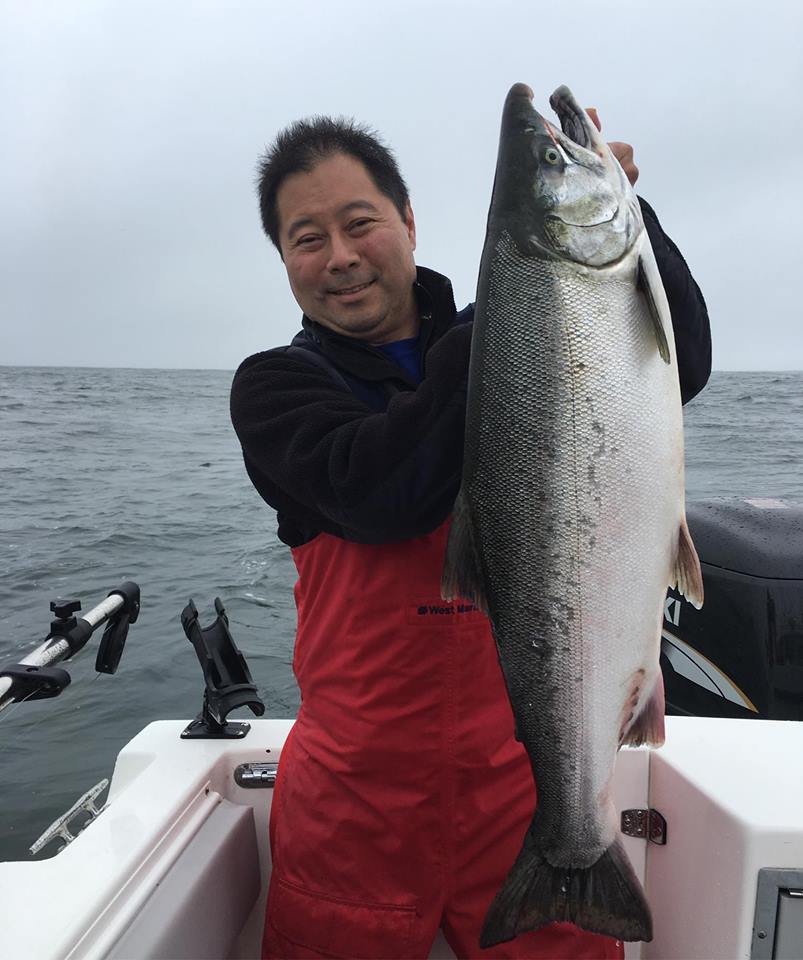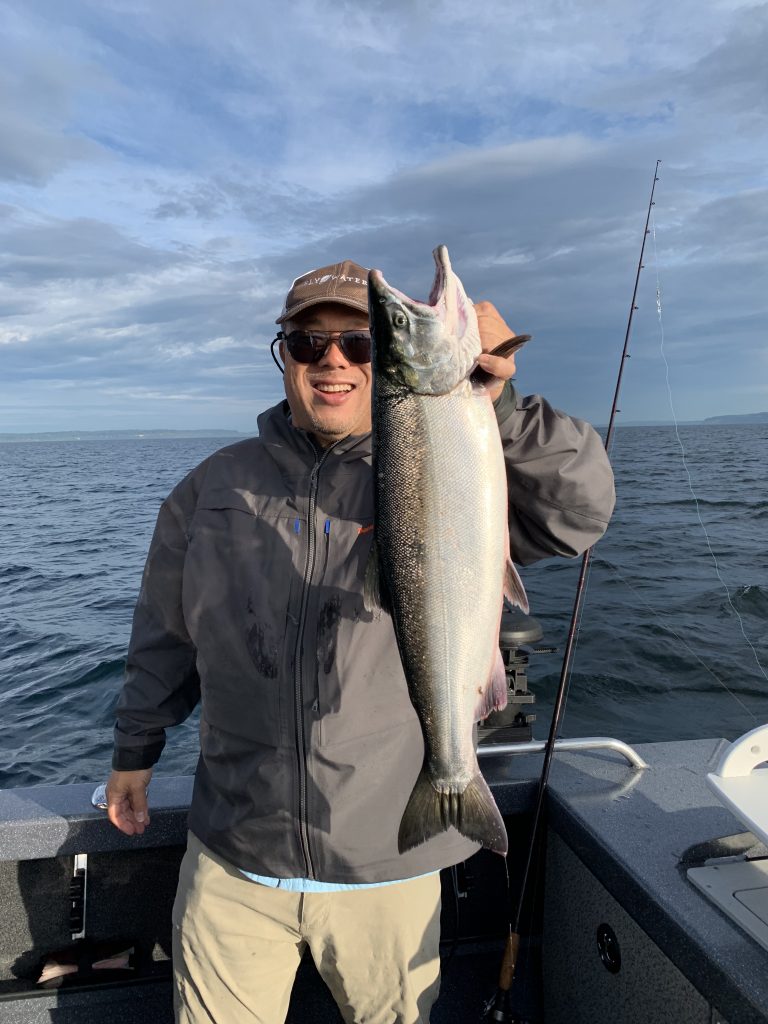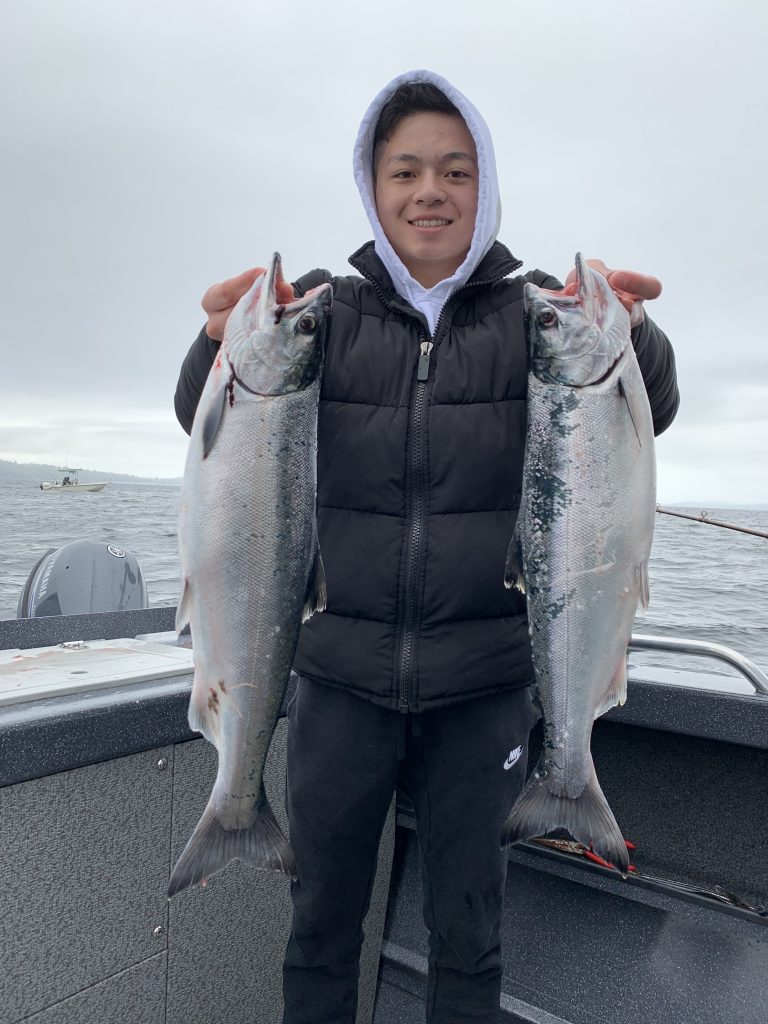Oregon Production Index “OPI” coho forecast of more than 1.73 million is largest prediction in more than five years, and could generate more liberal summer fishing seasons Leave a reply

By Mark Yuasa
Word has been swirling like a hard rip current through the PNW salmon fishing chat lines that a very strong coho return was expected to arrive off the coast in 2021, and the Columbia River recreational advisor group received confirmation on Wednesday that brighter days could be on the summer horizon.
The preliminary Oregon Production Index, which provides ocean coho abundance forecasts, calls for 1,732,900 coho to arrive off the Washington coast, compared to a preseason forecast of 268,700 last year and an actual return of 479,600.
The Columbia subtotal forecast is 1,590,000 coho compared to a forecast last year of 181,000 and a much larger actual return of 363,600.

These coho are the bread and butter for coastal fisheries off Neah Bay, La Push, Westport and Ilwaco and in the Columbia River from Buoy 10 upstream. This is the largest return dating back to at least 2015 when the forecast was 1,015,000 and in 2014 when the forecast was 1,724,000.
Digging even deeper in time you’d have to go back to 2009 when the forecast was 1.2 million coho — actual return was about 1.05 million — in what was deemed as a “wonderful ocean coho fishery season.”
“The big glimmer of hope for me is the coho jack numbers we saw on the Columbia River,” said Wendy Beeghley, the WDFW coastal salmon manager. “We also saw healthy jack counts for chinook in the Columbia too.”
A strong 2020 Columbia coho jack return – the highest seen since 1977 when 90,092 returned to hatcheries – could be the much-needed relief in 2021. Fishery managers base the following year’s adult coho forecast on how jack returns looked the year before.

When looking at coho seasons dating back 10 years, the 2020 season landed right on the same page as 2010, 2011 and 2012 when it was in the doldrums. The situation improved in 2013 and was a lot better by 2014 although there wasn’t many coho caught in the ocean fisheries.
Fishery managers indicate the 2020 adult coho returnees went out into the ocean as juvenile fish and suffered a big die-off (most likely related to the “Blob”) since all indications showed a great outgoing pattern for 2019 returns.
“The ocean is a mixed stock fishery and all it takes is one poor salmon return to limit everything especially coho runs on the northern coast,” Beeghley said. “However, the main players being the Columbia fish is always a positive sign for the ocean fisheries. It is nice to see as they dilute the impacts on weaker fish returns in mixed stock fisheries.”
The preliminary northern coastal wild coho return forecast in 2021 is 156,345 up from 118,858 in 2020 and down somewhat from 182,831 in 2019.
The coho numbers come on the heels of what is also expected to be a decent abundance of Upper Columbia adult summer chinook with a forecast of 77,600. If accurate it’d be the seventh highest return since 1980 and 109 percent of the average return observed over the past decade.
Better known as “June Hogs” they would be comprised of 36,900 four-year-old; 39,900 five-year-old; and 800 six-year-old fish.
That’s a good chunk of age four and five fish that’ll likely have anglers jumping for joy in the Chelan Falls-Beebe Bridge area as well as further downstream during the month of July.
The 2020 summer chinook return was the 12th largest since 1980, totaling 65,494 adults, compared to the preseason forecast of 38,300 adults. The 2020 return was 91 percent of the recent 10-year average (2010–2019) of 71,995 adults. The 2020 adult return was 96 percent of the average of returns observed since 2001, and nearly four times the average return during the years 1980–2000 (17,425 adults).
While a 155,600 forecast for Columbia River adult sockeye, including 27,300 Wenatchee, 127,300 Okanogan and 700 Snake River stocks is rather paltry compared to the actual return last season the hopes are this summer’s runs will also wax expectations leading to another good July fishery in the Brewster area of the Upper Columbia.
The forecast is 50 percent of 2011–2020 average total return of 312,234. The Wenatchee component is forecasted to be greater than the escapement objective but is less than the 10-year average return of 53,835 fish. The return of Okanogan-origin fish is expected to be approximately 49 percent of the recent 10-year average (257,179 fish). A return of 700 fish to the Snake River would be 57 percent of recent 10-year average return.
How all these Columbia River and coastal salmon forecasts correlate into exact fishing seasons won’t be finalized until April 8-14, but WDFW will unveil the 2021 salmon forecasts including Puget Sound forecasts at a public virtual meeting on Feb. 26. This should give us a little bit of sense as to what lies on the summer and fall fishing horizon.
The Pacific Fishery Management Council (PFMC) will announce three ocean salmon season and quota options during webinar meetings from March 2-11.
Other upcoming meetings are March 16, first North of Falcon (NOF) Zoom public meeting on preliminary Puget Sound and inner-marine area fisheries; March 17 and April 1, Columbia River fisheries discussion via Microsoft Teams meeting; March 23 and March 25, public meetings via Zoom on Puget Sound salmon fisheries; March 31, second NOF public meeting via Televideo; and April 8-15, PFMC meeting via webinar to adopt final salmon fishing seasons. For a list of meeting information, go to https://wdfw.wa.gov/fishing/management/north-falcon/public-meetings.

